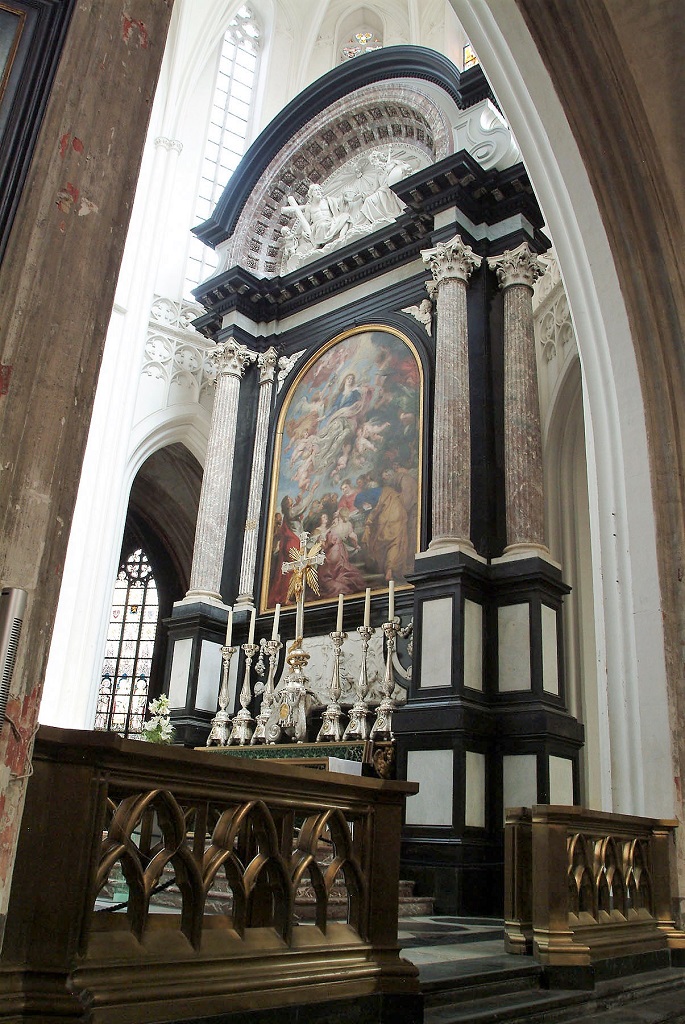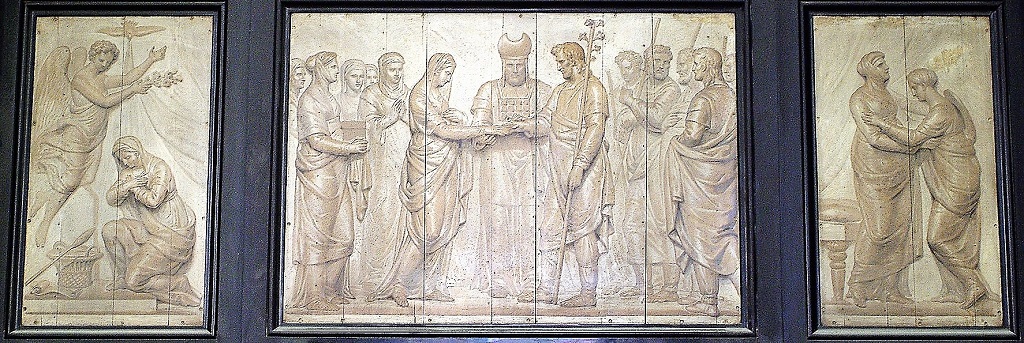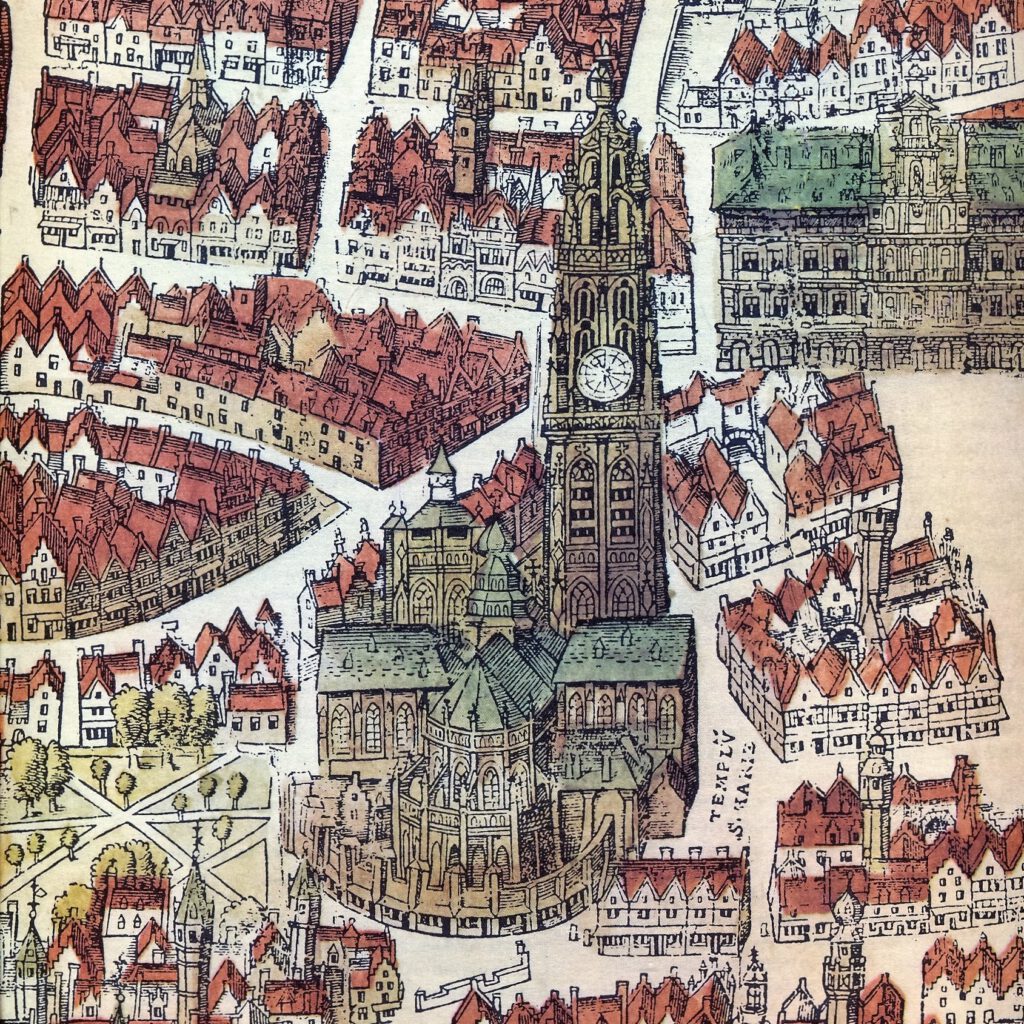The Our Lady’s Cathedral of Antwerp, a revelation.
The high altar
City architect Jan Blom constructed the impressive Neo-classicist high altarThe altar is the central piece of furniture used in the Eucharist. Originally, an altar used to be a sacrificial table. This fits in with the theological view that Jesus sacrificed himself, through his death on the cross, to redeem mankind, as symbolically depicted in the painting “The Adoration of the Lamb” by the Van Eyck brothers. In modern times the altar is often described as “the table of the Lord”. Here the altar refers to the table at which Jesus and his disciples were seated at the institution of the Eucharist during the Last Supper. Just as Jesus and his disciples did then, the priest and the faithful gather around this table with bread and wine. in 1822-1824. For this he could make use of the red veined pillars and the white marble predellaThe base of an altarpiece. Like the altarpiece, the predella may be painted or sculpted. coming from the late Baroque high altar of the demolished SaintThis is a title that the Church bestows on a deceased person who has lived a particularly righteous and faithful life. In the Roman Catholic and Orthodox Church, saints may be venerated (not worshipped). Several saints are also martyrs. Walburga’s Church from 1734-1737. The famous sculptor, Willem Ignatius Kerricx, was also one of the church wardens of this church.

The theme of the predella, The Raising of the Bronze Snake, had been chosen in harmony with the altar piece above: The Raising of Jesus’s Cross (by Rubens). In the desert the sinful Jewish people were punished with a plague of lethal poisonous serpents. With his staff Moses indicates the bronze snake that must be looked up at in order to stay alive (Num. 21:4-9): a prefiguration of Christ, raised on the cross, to whom entire mankind can look up to find salvation. Those who, as the priestIn the Roman Catholic Church, the priest is an unmarried man ordained as a priest by the bishop, which gives him the right to administer the six other sacraments: baptism, confirmation, confession, Eucharist, marriage, and the anointing of the sick. did in former times, look at the victims in close up, will not remained unmoved: as if they were film stills, you can see deadly agony and despair expressed in marble. When observing the full scene one notices how stretched out arms and longing looks succeed in transforming the dry story into a bustling scene filled with panic. The severe look of Moses pointing out the direction is impressive: the deeply chiselled features create sharp shadows, which enforce his leading and calming role. The cathedralThe main church of a diocese, where the bishop’s seat is. also possesses the two marble medallions, Saint Walburga and Saint Eligius, which decorated Kerricx’s altar in Saint Walburga’s Church (cp. The exterior wings of The Raising of the Cross).

The large canvas by Abraham Matthijssens (1633) on the reverse of the high altar shows the moment that precedes Mary’s Assumption on the front: Mary’s deathbed, surrounded by the apostles and the three legendary women who will lay her out.
On the Classicist frieze by Mathias van Bree (1823) underneath, three grisaille paintings show scenes from the life of Mother Mary before giving birth to Jesus: The Annunciation, Her Wedding with Joseph and Her Visit to Elizabeth. The extremely successful trompe l’oeil has offered the illusion of low-relief to many a visitor!
Underneath we can admire some of those wonderful examples of Flemish Baroque sculpture: three white marble reliefs coming from the coopers’ altar.



